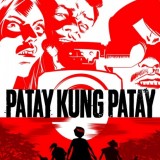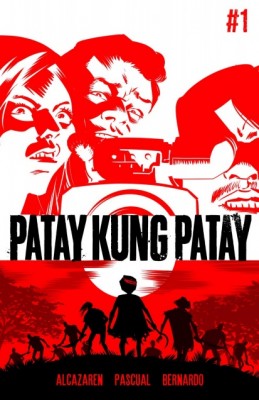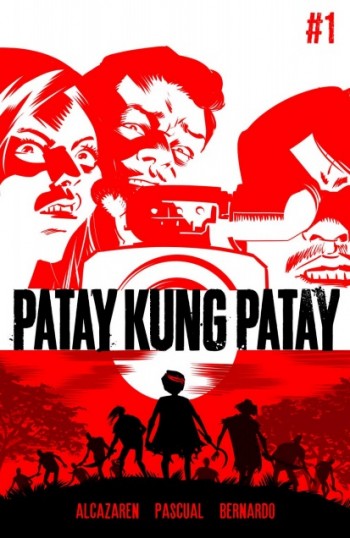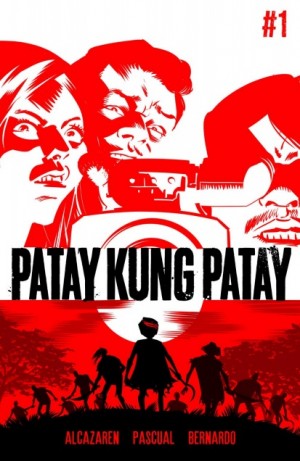
COMIC BOOK REVIEW: Patay Kung Patay #1
FEAR THE PAST really want to stir the hornet’s nest by deliberately challenging the current status quo in the visual literary genre entitled Patay Kung Patay (PKP). Patay Kung Patay #1 is the first of the six chapter mini-series, including a page devoted for the current cast of characters who are basically the reflections of […]
FEAR THE PAST
 really want to stir the hornet’s nest by deliberately challenging the current status quo in the visual literary genre entitled Patay Kung Patay (PKP). Patay Kung Patay #1 is the first of the six chapter mini-series, including a page devoted for the current cast of characters who are basically the reflections of true-to-life personalities in the media, society circles, and the socio-politico-economic ruling establishment. This 27-page turner issue is riveting, maddening, infuriating, and a sure fire-controversial piece of graphic literature in both condemning the innate hypocrisies and contradictions within the prevailing power structures of our current Philippine situation, and highlighting the injustices and mockeries the former treat to the original but oppressed majority members of the quasi-feudalistic society that is still existing and felt right now. In short, PKP stokes fire right now.
really want to stir the hornet’s nest by deliberately challenging the current status quo in the visual literary genre entitled Patay Kung Patay (PKP). Patay Kung Patay #1 is the first of the six chapter mini-series, including a page devoted for the current cast of characters who are basically the reflections of true-to-life personalities in the media, society circles, and the socio-politico-economic ruling establishment. This 27-page turner issue is riveting, maddening, infuriating, and a sure fire-controversial piece of graphic literature in both condemning the innate hypocrisies and contradictions within the prevailing power structures of our current Philippine situation, and highlighting the injustices and mockeries the former treat to the original but oppressed majority members of the quasi-feudalistic society that is still existing and felt right now. In short, PKP stokes fire right now.
The premier chapter sets up already the direction of the overall plot with a slight twist: uncovering the bloody past of one the prominent, influential and powerful clans in the Philippines. The “twist” here is the utilization of investigative reportage or journalism in unraveling the “truth” behind the dark secrets of the said subject. Hence, the creative team applies the classic narrative tropes of noir and suspense, but the journalists are the “detectives”/“truth-seekers”. This is relevant since investigative journalism is one media branch that is still enjoying both public and critical creditability. Moreover, the PKP team sheds no subtleties here for those who are both updated with the current developments and historical knowledge in Philippine society and popular culture references are aware who exactly these so-called “fictional characters” these and the events inspired leading to this devastating critique to the ruling status quo as well. In true noir fashion, the supernatural feel is definitely included that may or otherwise influence the general outcome in the upcoming chapters. We may live in the 21st century but the paradox here is we still believe, embrace, and even fear some of the stuffs beyond our comprehensions, knowledge and senses. Thus, PKP further reinforces the noir-crime adage, “they are not what they seem at all.”
The narrative is pretty straightforward. Even the foreshadowing and exposition moments are executed brilliantly. The sequential and narrative paneling is remarkably smooth, accessible and non-superficial. Character portrayals and some of their respective characterizations are even well-defined, very connectable to the things we hear, watch, and read in the mainstream media, then and now. Readers with a sense of social justice and being progressives can feel the stenches of debauchery, decadence and dehumanization the haute society does to the hoi polloi. PKP packs a mean punch and that means a lot. The dialogues and scripts are remarkably achieved a sense of balance of seriousness, humor, quirkiness, snappiness, and moreover, the Pinoy-na-Pinoy taste, even when some casts speak in haute English. Of course, the Tagalog-Filipino wordings are equally naturally genuine, as if you can literally hear their voices in real life.
AJ Bernardo’s art is one hell from the artist. He may apply the classic black-and-white coloring template but his red-color executions are definitely deft, at the same time, strikingly poignant, if not provocative. The former also serves as the inking and shading but the artist succeeds what many lesser kinds fail: virtual perfection in fusing those supposed compartmentalized artistic tasks. AJ’s drawings of the sprawling vista and the rice fields are simply breathtaking. The ominous red skies clearly set and determine the mood of the entire chapter itself. The painstaking intricate illustrations of the clan’s palatial interiors and even a Hummer are outrageously gorgeous to mesmerize. But the reddish signifiers of the innards, violence, blood, gore, and decomposing bodies are deliberately colored to desensitize the glamour and glory of the grandeur and to humanize what defines us as humans—the product of contradictions.
From the first page up to the terrifying cliffhanger, this first PKP part is no walk in the park. It targets basically to the justice-driven types and to the progressive-minded ones. Again, PKP pulls no punches, here, particularly the Institutions. It has explicit themes, namely course languages, disturbing topics, and plenty of bloody stuffs suited for intelligent reading. Despite my profound adoration on AJ’s excellent craftsmanship, I still find some of his facial portrayals awkward, if not exaggeratingly forced, most especially many facial expressions of a certain lady journalist.
PKP #1 sets the tone immediately. This is noir but grounded with and inspired by the harsh realities in our culture and society. Characters here are even interesting and engaging, more so to their developments and characterizations. If Karl Marx, Friedrich Engels, VI Lenin and Che Guevara are alive and kicking, they would or might definitely give PKP the two-thumbs up mark! So, say you want a revolution?















